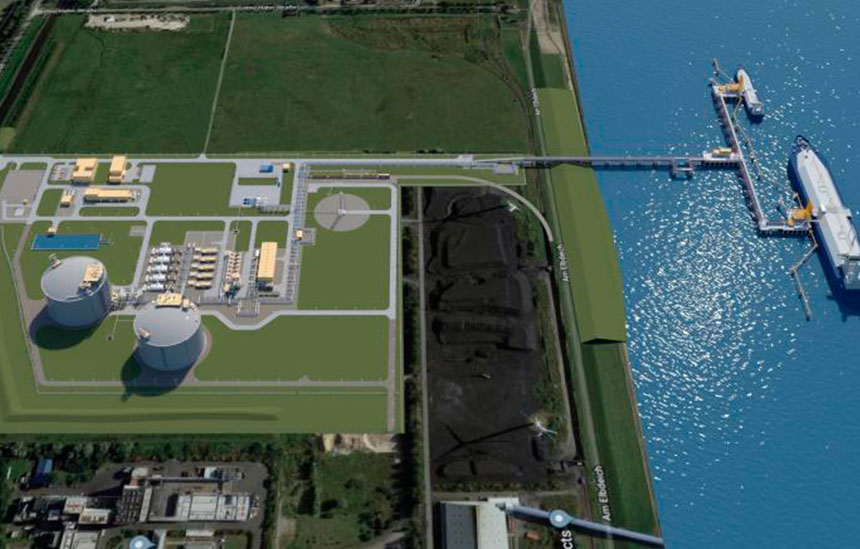It is the first regasification terminal in Germany, and it will allow the country to inject gas to the national network from the sea.
The consortium comprising the companies COBRA, a company of the VINCI group, and SENER – with a 62% and 38% share, respectively – has signed with the client German LNG Terminal GmbH the EPC (Engineering, Procurement and Construction) contract for the Liquefied Natural Gas (LNG) regasification terminal, which will be located in the German town of Brunsbüttel. This regasification terminal is a strategic project not only for the client but also for Germany as part of its energy transition process.
Located in the North of the country, at the mouth of the Elbe River in the North Sea, the regasification plant will have two 165,000-m3 storage tanks and the capacity to produce up to 8 BCMA (Billion Cubic Meters per Annum) of natural gas per year, which can be expanded to at least 10 BCMA. It will be equipped with two jetties, unloading arms, storage tanks, systems for regasification and gas emission, a BOG (Boil-off Gas) recovery system, a flare stack, auxiliary systems, and a series of buildings specially designed for the operations.
The terminal will provide various services: loading and unloading of carriers, storage of LNG, regasification, injection into the German natural gas grid and distribution of LNG via tankers and railway tanker wagons.
The new terminal will offer an alternative to the gas imported by land. In this respect, the company German LNG Terminal GmbH has indicated that this terminal “will make a significant contribution to the security of energy supply in Germany and Europe.”
This EPC contract is a continuation of the engineering work being carried out by the consortium comprising COBRA and SENER, evidencing the extensive experience of both actors in energy, oil and gas projects around the world. These include the design and construction of LNG terminals Sagunto and Bahía Bizkaia Gas (Spain), Gate terminal (Netherlands), Dunkerque (France) and Zeebrugge (Belgium).
The collaboration is worth a substantial investment and comprises a first tranche of preliminary work lasting around 9 to 15 months, with some construction work already taking place in parallel over a period of around 42 months. Under current conditions, it is realistic to expect completion in 2026. However, all parties involved are all working to further accelerate the project in compliance with all licensing and state aid requirements.

